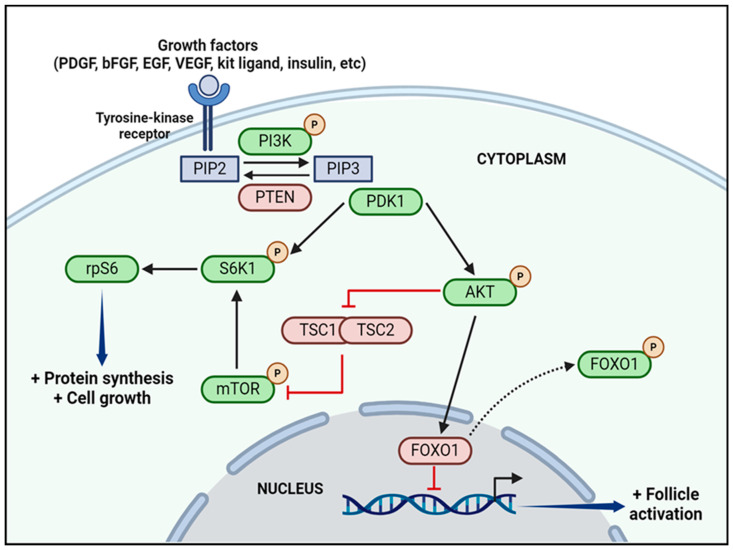Figure 3.
The PI3K/AKT pathway is activated following binding of several growth factors to tyrosine-kinase receptors on cell membranes. This interaction leads to PIP2 transformation into PIP3. AKT is then phosphorylated and translocated to the nucleus where it phosphorylates FOXO1, resulting in its export into the cytoplasm. After translocation, inactive FOXO1 ceases its inhibitory effect over transcriptional factors, enhancing follicle activation and growth. mTOR, another AKT downstream effector regulates protein synthesis and cell growth through ribosomal biosynthesis, also promoting follicle activation. PTEN, on the other hand, counteracts the conversion of PIP2 into PIP3, inhibiting the pathway. Activators are represented in green and inhibitors in red. Created with BioRender.com. Abbreviations: AKT (protein kinase B); bFGF (basic fibroblast growth factor); EGF (epidermal growth factor); FOXO1 (forkhead box O1); mTOR (mammalian target of rapamycin); P (phosphorylated); PDGF (platelet-derived growth factor); PDK1 (phosphoinositide-dependent kinase-1); PI3K (phosphatidylinositol 3-kinase); PIP2 (phosphatidylinositol 4,5-bisphosphate); PIP3 (phosphatidylinositol 3,4,5-trisphosphate); PTEN (phosphatase and tensin homolog); rpS6 (ribosomal protein S6); S6K1 (S6 kinase 1); TSC1 and TSC2 (tuberous sclerosis complex 1 and 2); VEGF (vascular endothelial growth factor).

